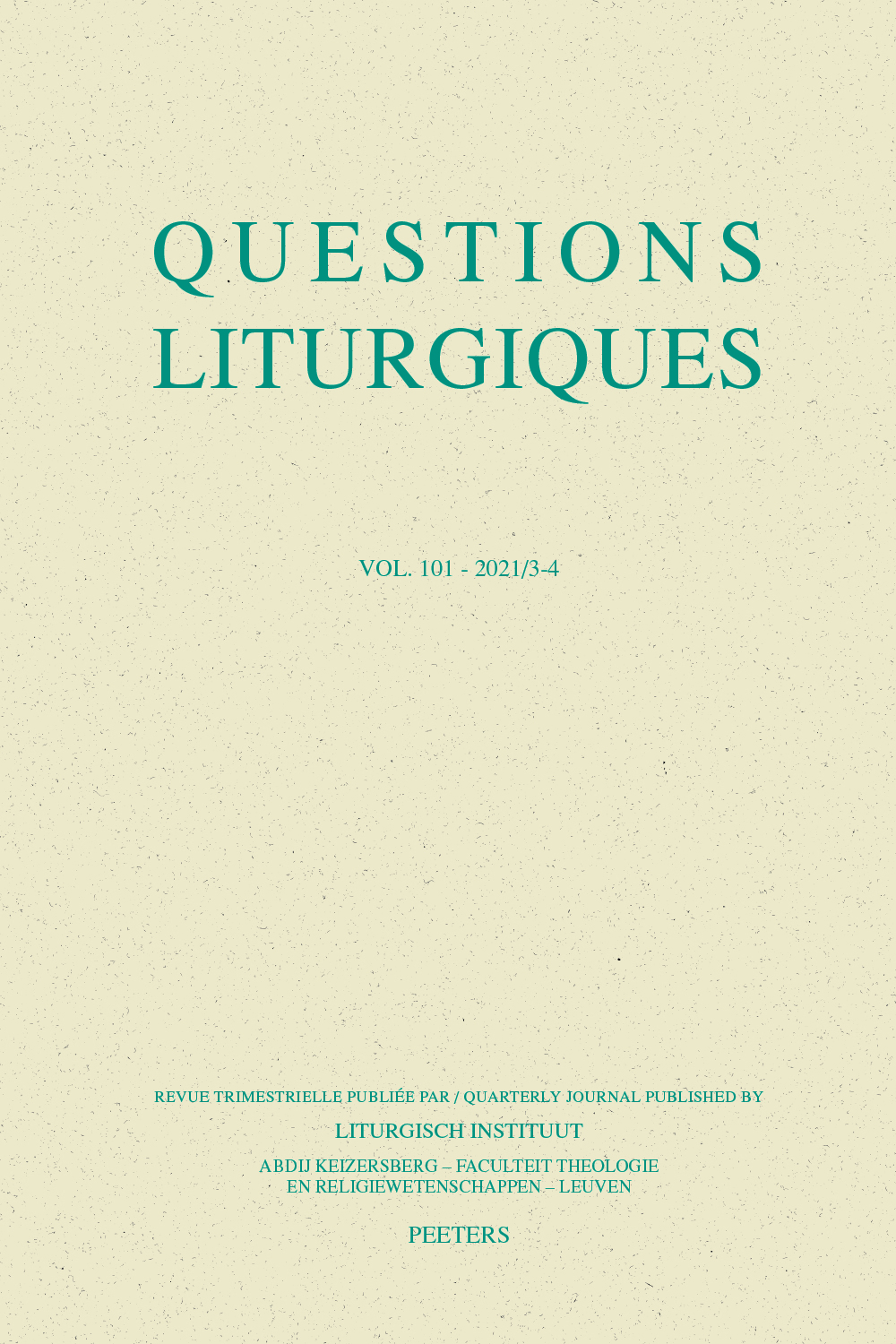 previous article in this issue previous article in this issue | next article in this issue  |

Preview first page |
Document Details : Title: The Reception of the Conciliar Liturgical Reforms in Ireland Author(s): DUFFY, Eugene Journal: Questions Liturgiques/Studies in Liturgy Volume: 95 Issue: 1-2 Date: 2014 Pages: 110-127 DOI: 10.2143/QL.95.1.3030648 Abstract : The Henrician Reformation impacted on the liturgical life of the Church in Ireland for the best part of three hundred years, robbing it of most of its patrimony of art, architecture and public liturgical practices. When the Church was rebuilt in the nineteenth century it was heavily influenced by Roman and French piety and sensibilities. However, the popular Irish piety, with a deep reverence for the Mass endured with congregations remaining silent and passive. During the 1950s key pastoral theologians, by means of conferences and journals, opened the Church in Ireland to the developments in liturgical renewal that were afoot on mainland Europe. These same people, using the same means, were the main movers in promoting the liturgical renewal of Vatican II. Their efforts were taken forward by others, too, by means of liturgical studies, formation projects and various publications. The bishops accepted the reforms of the Council and introduced them in their dioceses, where they were enthusiastically embraced at the practical level. There is less convincing evidence that an internal renewal occurred or that the deeper theological principles were as well received as the changes at the level of ritual and practice. La réforme henricienne a empreint la vie liturgique de l’Église en Irlande pour la plus grande part de trois siècles, la spoliant fortement de son patrimoine artistique, architecture et pratiques liturgiques publiques. Quand l’Église fut rétablie au 19e siècle, elle se trouva fortement influencée par la piété et la sensibilité romaine et française. Néanmoins la piété populaire irlandaise, avec une profonde révérence pour la messe, resta silencieuse et passive. Vers 1950 des théologiens pastoraux, à l’aide de conférences et revues, ouvrirent l’Église d’Irlande aux développements du renouveau liturgique qui se manifestait sur le continent européen. Ce même peuple, utilisant les mêmes idées, forma les principaux artisans dans la promotion du renouveau liturgique de Vatican II. Ses efforts seront poursuivis par d’autres, par le biais d’études liturgiques et par l’élaboration de projets et de publications diverses. Les évêques acceptèrent les réformes du Concile et les introduisirent dans leur diocèse, où elles furent reçues avec enthousiasme dans le domaine pratique. Il est moins évident qu’un renouveau interne se produisit ou que des principes théologiques plus profonds furent introduits au niveau du rituel et dans la pratique. |
|


